Tom Dhaene
Specification-Oriented Automatic Design of Topologically Agnostic Antenna Structure
Mar 17, 2025Abstract:Design of antennas for modern applications is a challenging task that combines cognition-driven development of topology intertwined with tuning of its parameters using rigorous numerical optimization. However, the process can be streamlined by neglecting the engineering insight in favor of automatic de-termination of structure geometry. In this work, a specification-oriented design of topologically agnostic antenna is considered. The radiator is developed using a bi-stage algorithm that involves min-max classification of randomly-generated topologies followed by local tuning of the promising designs using a trust-region optimization applied to a feature-based representation of the structure frequency response. The automatically generated antenna is characterized by -10 dB bandwidth of over 600 MHz w.r.t. the center frequency of 6.5 GHz and a dual-lobe radiation pattern. The obtained performance figures make the radiator of use for in-door positioning applications. The design method has been favorably compared against the frequency-based trust-region optimization.
Data-Efficient Interactive Multi-Objective Optimization Using ParEGO
Jan 12, 2024Abstract:Multi-objective optimization is a widely studied problem in diverse fields, such as engineering and finance, that seeks to identify a set of non-dominated solutions that provide optimal trade-offs among competing objectives. However, the computation of the entire Pareto front can become prohibitively expensive, both in terms of computational resources and time, particularly when dealing with a large number of objectives. In practical applications, decision-makers (DMs) will select a single solution of the Pareto front that aligns with their preferences to be implemented; thus, traditional multi-objective algorithms invest a lot of budget sampling solutions that are not interesting for the DM. In this paper, we propose two novel algorithms that employ Gaussian Processes and advanced discretization methods to efficiently locate the most preferred region of the Pareto front in expensive-to-evaluate problems. Our approach involves interacting with the decision-maker to guide the optimization process towards their preferred trade-offs. Our experimental results demonstrate that our proposed algorithms are effective in finding non-dominated solutions that align with the decision-maker's preferences while maintaining computational efficiency.
$\{\text{PF}\}^2\text{ES}$: Parallel Feasible Pareto Frontier Entropy Search for Multi-Objective Bayesian Optimization Under Unknown Constraints
Apr 11, 2022
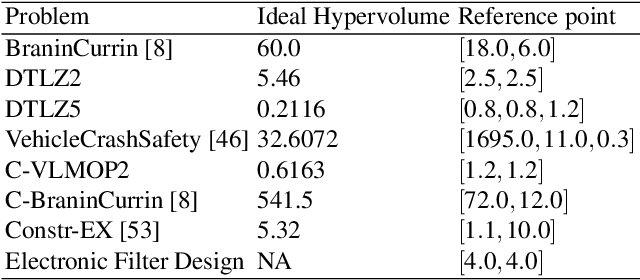
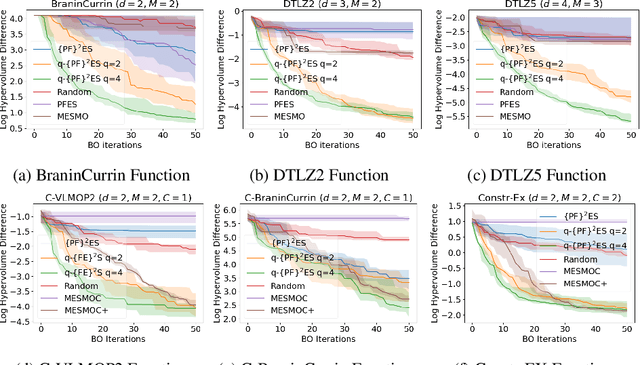
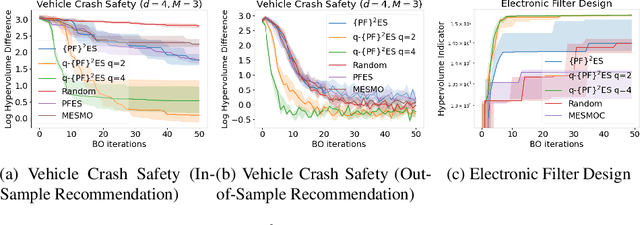
Abstract:We present Parallel Feasible Pareto Frontier Entropy Search ($\{\text{PF}\}^2$ES) -- a novel information-theoretic acquisition function for multi-objective Bayesian optimization. Although information-theoretic approaches regularly provide state-of-the-art optimization, they are not yet widely used in the context of constrained multi-objective optimization. Due to the complexity of characterizing mutual information between candidate evaluations and (feasible) Pareto frontiers, existing approaches must employ severe approximations that significantly hamper their performance. By instead using a variational lower bound, $\{\text{PF}\}^2$ES provides a low cost and accurate estimate of the mutual information for the parallel setting (where multiple evaluations must be chosen for each optimization step). Moreover, we are able to interpret our proposed acquisition function by exploring direct links with other popular multi-objective acquisition functions. We benchmark $\{\text{PF}\}^2$ES across synthetic and real-life problems, demonstrating its competitive performance for batch optimization across synthetic and real-world problems including vehicle and electronic filter design.
Sensor Fusion using Backward Shortcut Connections for Sleep Apnea Detection in Multi-Modal Data
Dec 14, 2019



Abstract:Sleep apnea is a common respiratory disorder characterized by breathing pauses during the night. Consequences of untreated sleep apnea can be severe. Still, many people remain undiagnosed due to shortages of hospital beds and trained sleep technicians. To assist in the diagnosis process, automated detection methods are being developed. Recent works have demonstrated that deep learning models can extract useful information from raw respiratory data and that such models can be used as a robust sleep apnea detector. However, trained sleep technicians take into account multiple sensor signals when annotating sleep recordings instead of relying on a single respiratory estimate. To improve the predictive performance and reliability of the models, early and late sensor fusion methods are explored in this work. In addition, a novel late sensor fusion method is proposed which uses backward shortcut connections to improve the learning of the first stages of the models. The performance of these fusion methods is analyzed using CNN as well as LSTM deep learning base-models. The results demonstrate a significant and consistent improvement in predictive performance over the single sensor methods and over the other explored sensor fusion methods, by using the proposed sensor fusion method with backward shortcut connections.
Generating an Explainable ECG Beat Space With Variational Auto-Encoders
Nov 12, 2019



Abstract:Electrocardiogram signals are omnipresent in medicine. A vital aspect in the analysis of this data is the identification and classification of heart beat types which is often done through automated algorithms. Advancements in neural networks and deep learning have led to a high classification accuracy. However, the final adoption of these models into clinical practice is limited due to the black-box nature of the methods. In this work, we explore the use of variational auto-encoders based on linear dense networks to learn human interpretable beat embeddings in time-series data. We demonstrate that using this method, an interpretable and explainable ECG beat space can be generated, set up by characteristic base beats.
GPflowOpt: A Bayesian Optimization Library using TensorFlow
Nov 10, 2017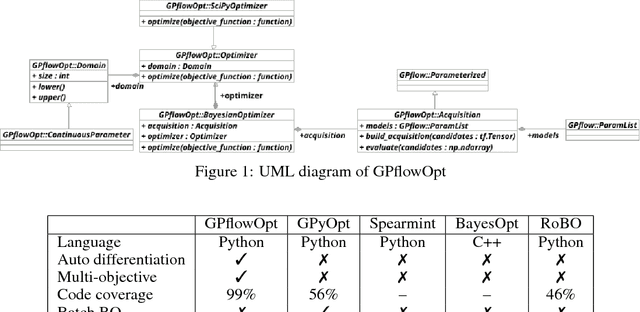
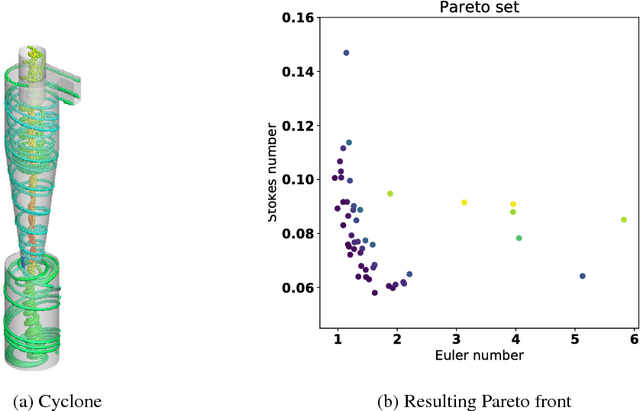
Abstract:A novel Python framework for Bayesian optimization known as GPflowOpt is introduced. The package is based on the popular GPflow library for Gaussian processes, leveraging the benefits of TensorFlow including automatic differentiation, parallelization and GPU computations for Bayesian optimization. Design goals focus on a framework that is easy to extend with custom acquisition functions and models. The framework is thoroughly tested and well documented, and provides scalability. The current released version of GPflowOpt includes some standard single-objective acquisition functions, the state-of-the-art max-value entropy search, as well as a Bayesian multi-objective approach. Finally, it permits easy use of custom modeling strategies implemented in GPflow.
Positive blood culture detection in time series data using a BiLSTM network
Dec 03, 2016


Abstract:The presence of bacteria or fungi in the bloodstream of patients is abnormal and can lead to life-threatening conditions. A computational model based on a bidirectional long short-term memory artificial neural network, is explored to assist doctors in the intensive care unit to predict whether examination of blood cultures of patients will return positive. As input it uses nine monitored clinical parameters, presented as time series data, collected from 2177 ICU admissions at the Ghent University Hospital. Our main goal is to determine if general machine learning methods and more specific, temporal models, can be used to create an early detection system. This preliminary research obtains an area of 71.95% under the precision recall curve, proving the potential of temporal neural networks in this context.
Hypervolume-based Multi-objective Bayesian Optimization with Student-t Processes
Dec 01, 2016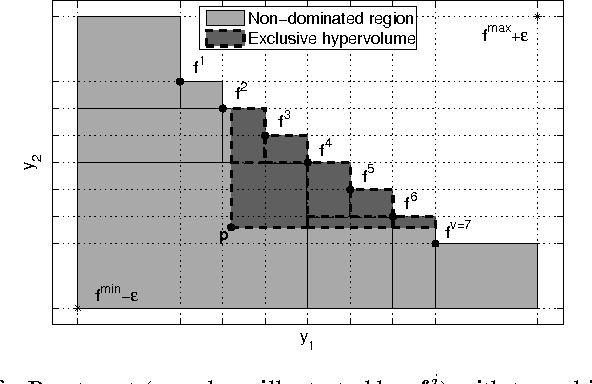
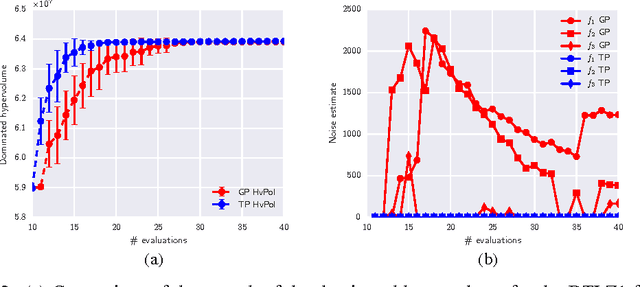
Abstract:Student-$t$ processes have recently been proposed as an appealing alternative non-parameteric function prior. They feature enhanced flexibility and predictive variance. In this work the use of Student-$t$ processes are explored for multi-objective Bayesian optimization. In particular, an analytical expression for the hypervolume-based probability of improvement is developed for independent Student-$t$ process priors of the objectives. Its effectiveness is shown on a multi-objective optimization problem which is known to be difficult with traditional Gaussian processes.
Active Learning for Approximation of Expensive Functions with Normal Distributed Output Uncertainty
Aug 18, 2016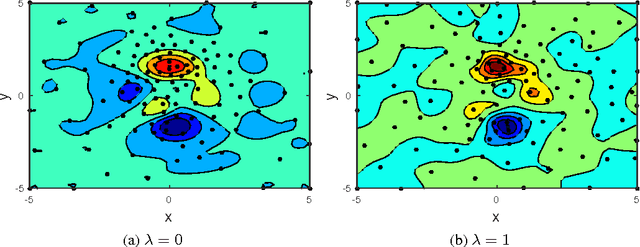
Abstract:When approximating a black-box function, sampling with active learning focussing on regions with non-linear responses tends to improve accuracy. We present the FLOLA-Voronoi method introduced previously for deterministic responses, and theoretically derive the impact of output uncertainty. The algorithm automatically puts more emphasis on exploration to provide more information to the models.
Fast Calculation of the Knowledge Gradient for Optimization of Deterministic Engineering Simulations
Aug 16, 2016



Abstract:A novel efficient method for computing the Knowledge-Gradient policy for Continuous Parameters (KGCP) for deterministic optimization is derived. The differences with Expected Improvement (EI), a popular choice for Bayesian optimization of deterministic engineering simulations, are explored. Both policies and the Upper Confidence Bound (UCB) policy are compared on a number of benchmark functions including a problem from structural dynamics. It is empirically shown that KGCP has similar performance as the EI policy for many problems, but has better convergence properties for complex (multi-modal) optimization problems as it emphasizes more on exploration when the model is confident about the shape of optimal regions. In addition, the relationship between Maximum Likelihood Estimation (MLE) and slice sampling for estimation of the hyperparameters of the underlying models, and the complexity of the problem at hand, is studied.
 Add to Chrome
Add to Chrome Add to Firefox
Add to Firefox Add to Edge
Add to Edge